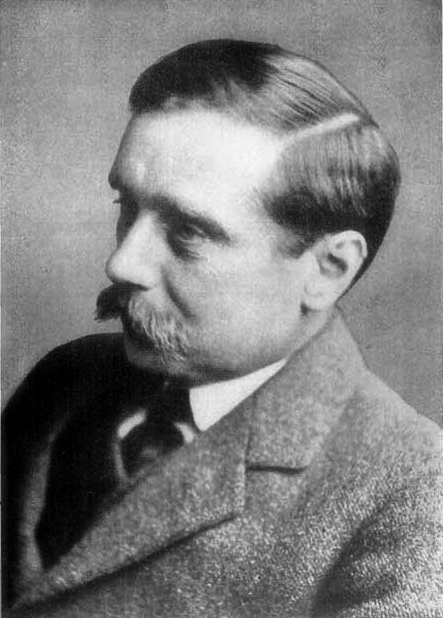“The Thing in No. 7” is a short story by the English author H. G. Wells, first published in the Pall Mall BudgetWeekly magazine published in London from 1868 until 1920. on 25 October 1894.[1] The story is narrated by one of a group of friends who are holidaying in Southsea when a severe storm leads one of them to inadvertently take shelter in an empty house.
Although he is probably best remembered today as a writer of science fiction, “The Thing in No. 7” is one of Wells’s forays into the horror story genre.
Synopsis
Four friends – Bailey, Wilderspin, Pryor or Preyer, and the narrator – turn out to watch a firework display on Southsea Common one evening after dinner. A fierce storm suddenly breaks out, and the thunder, lightning and hail cause most of the spectators to flee, some of the ladies hitching up their dresses “scandalously for better speed”. The four men decide to make a run for it back to their lodgings at No. 6 Cholmonde-ley Parade, with Wilderspin in the lead.
In the dark Wilderspin mistakenly runs up the steps into the house next door, No. 7, and as he does so the door opens in front of him, slamming closed as he enters. A flash of lightning reveals to the narrator that the house is empty and in darkness, with “something black hung over the stuccoed parapet above”. The others continue on to No. 6, expecting Wilderspin to follow on at any moment, having realised his mistake.
But after a few minutes Wilderspin has still not appeared, so the others decide to investigate. Entering the house, they see a “black lump” at the head of the staircase leading from the hall, which after lighting a match they see to be Wilderspin crouched against the wall. On seeing his companions, Wilderspin makes his way down the staircase crying “save me! save me!” and they all return to their lodgings.
Wildserspin’s evident fear and his uncontrollable sobbing determines Bailey to go back to No. 7: “I’d rather be devoured by ghouls than by this curiosity”, and the others agree to accompany him. They wait until Wilderspin is asleep, and then at about eleven o’clock they approach the door of No. 7. Before they can enter they hear the voice of a policeman behind them asking “What’s the little game?”
The men explain that there is “something wrong in this house”, and that the door is open. They follow the policeman carrying his lantern into the hall, and at about the same place they had found Wilderspin they find a dead, mutilated body. It appears to have been a thief who was in the act of stealing the brass handrail that ran down the wall when a bolt of lightning struck and electrocuted him. The “something black” that the narrator had seen earlier was the remains of a metal flagpole braced by zinc wires that had been on the roof, and had conducted the electricity into the fabric of the house.
Commentary
Wells’s other horror stories include “The Red RoomShort story by H. G. Wells first published in 1896, a horror story in the manner of Edgar Allan Poe.” and “Pollock and the Porroh ManShort story by H. G. Wells first published in 1895, about a murdered witch-doctor whose severed head haunts the man responsible for his death.“, both written in the manner of Edgar Allan Poe (1809–1849).[2]
See also
- H. G. Wells bibliographyList of publications written by H. G. Wells during the more than fifty years of his literary career.

